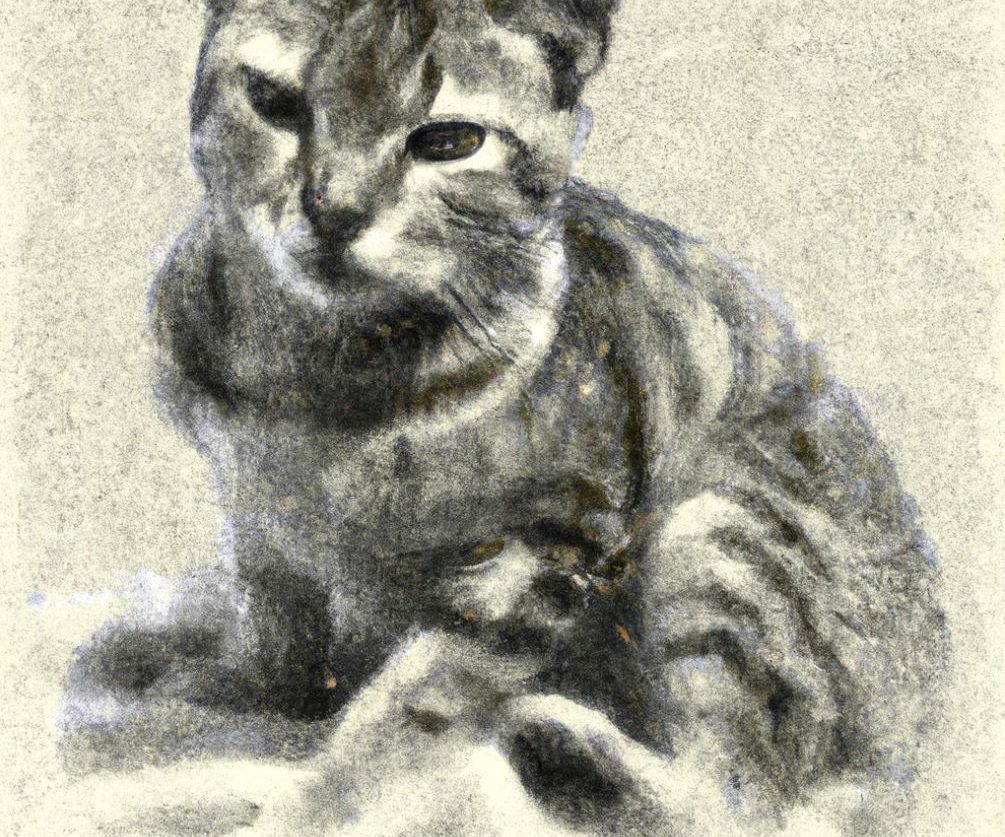Leash Training Your Cat: A Step-by-Step Guide
If you're a cat owner, you might be surprised to learn that you can actually train your cat to walk on a leash. Although cats often have the impression of being independent and difficult to train, leash training has a number of advantages for both you and your pet. We'll discuss the significance of leash training, the advantages it can provide, and give a brief outline of the training procedure in this guide.
Importance of Leash Training a Cat
Whether you live in an apartment or a bustling urban location, leash training may be a crucial skill for your cat to acquire. Leash-walking your cat lowers the possibility of mishaps, injury, or loss while allowing them to explore the outdoors under close supervision. Leash training can also be a wonderful way to bond with your cat, giving them new experiences and enhancing their life.
Benefits of Leash Training a Cat
Additionally, leash training has a number of advantages for both you and your cat. Leash training helps cats get exercise and cerebral stimulation, which helps their physical and mental health. Also, it can ease stress and anxiety, especially for indoor cats who might not have access to external areas. Leash training can give owners a feeling of security and control. As well as the chance to spend quality time with their cats.
Brief Overview of the Training Process
Leash training your cat can be a lengthy and patient process, but most cats can be taught to love leash walks with continuous training and good reinforcement. Choosing the appropriate harness and leash and gradually introducing your cat to wearing the harness indoors are the first steps in the training process. Before transitioning to outside walks, you can begin practicing short indoor walks after your cat is at ease wearing the harness.
The preparation for leash training, as well as hints and troubleshooting guidance, will be covered in more detail in the parts that follow. At the end of this article, you'll be prepared to begin cat leash training and profit from outside activities with your feline companion.
Preparation
It's crucial to prepare before you begin teaching your cat to walk on a leash. This entails picking the appropriate leash and harness, sizing the harness properly, and introducing the harness and leash to your cat. Let's examine each stage in more detail:
Choosing the Right Leash and Harness
There are various things to think about when selecting a leash and harness for your cat. Seek for a harness with adjustable straps that fits snugly but not too firmly around the body of your cat. If the harness is too loose, it may be simple for your cat to escape, while if it is too tight, it may be uncomfortable and restrict movement.
Choose a short, lightweight leash for the harness. Your cat will travel under your supervision and won't wander off too far if the leash is shorter. Retractable leashes should not be used as they pose a risk to cats and are challenging to manage.
Fitting the Harness Correctly
It's critical to make sure the cat harness fits properly after you've selected the best model. You should be able to fit two fingers between the harness and your cat's skin. Tighten the straps so that they are snug but not too tight around your cat's body. Verify your cat's skin, especially the areas around the neck and armpits, is not rubbed or chafed by the harness.
Before beginning the training process, it's a good idea to let your cat wear the harness for brief amounts of time indoors so they can become used to wearing it and so you can assess the fit.
Introducing the Harness and Leash
It may take some time and care to get your cat used to the collar and leash. Let your cat explore the harness and sniff it at first, reinforcing good behavior with goodies and praise. Once your cat is at ease wearing the harness, fasten the leash and allow it to be dragged around the house, again praising good behavior.
Before transitioning to outside walks, gradually extend the amount of time your cat spends using the harness and leash, and practice walking together indoors. Never force your cat to wear the collar or walk on the leash if they seem uncomfortable or stressed out when you are teaching them.
You can help your cat succeed in the process of learning to walk on a leash by taking the time to properly prepare. You'll soon be taking walks with your kitty companion if you have patience and use positive reinforcement.
Indoor Training
It's time to start practicing walking with your cat after they feel secure using the harness and leash indoors. Before moving on to outdoor walks, this indoor training phase is crucial. What you need to know is as follows:
Getting the Cat Comfortable with the Harness
Make sure your cat is entirely at ease wearing the harness before you start walking them on a leash. Give your cat treats or vocal praise as positive reinforcement to get them to wear the harness for extended lengths of time. Take a step back and give your cat extra time to get used to the harness if they look uncomfortable.
Using Treats and Positive Reinforcement
Like with any kind of animal training, success depends on using positive reward. To get your cat to follow you while wearing a leash, reward him or her with food and verbal praise. Start by leading your cat a little distance from you; when they follow you, give them with a goodie. Increase the length and frequency of your walks with your cat gradually while continuing to reward positive behavior with food.
Practicing Walking Indoors
As you begin practicing indoor cat walking, make sure the space is secure and safe. Choose a room that is calm and free of distractions, and take care to eliminate any potential dangers like frayed cords or breakable items. Use goodies and praise to entice your cat to accompany you on walks.
After your cat feels at ease using the leash to navigate indoor spaces, you can begin working on more difficult maneuvers including turning, halting, and ascending and descending stairs. It's crucial to be patient and go at your cat's pace; never make them do anything they don't want to do.
You may assist your cat become accustomed to the feeling of walking on a leash and increase their confidence by having them practice walking inside. This will facilitate and enhance your outdoor walks with your cat.
Outdoor Training
It's time to move your training outside now that your cat feels at ease using a leash inside. Walks outside provide your cat the chance to explore and exercise in a secure setting. To ensure the success of your outdoor training, remember the following:
Choosing the Right Location
It's crucial to start with a calm and familiar environment when picking a site for your outdoor training. Pick an area where there won't be too much noise, people, or other animals to disturb your cat. Start in a peaceful park or a fenced-in backyard.
Before going outside, be cautious to check the weather because your cat may become injured by high or low temperatures or bad weather. To keep your cat hydrated and engaged, it's a good idea to bring snacks and water with you.
Keeping the Leash Loose
It's crucial to keep the leash free when you first start walking your cat outside. Your cat needs to be free to roam without feeling constrained by the leash. You may progressively tighten the leash as your cat grows more accustomed to walking on it to keep them close to you.
To avoid making your cat feel stressed or uncomfortable, don't pull or tug on the leash. Instead, encourage your cat to remain with you by using positive reinforcement.
Encouraging Exploration While Staying Safe
Your cat can explore and exercise on walks outside, but it's crucial to keep them secure at all times. Watch out for any possible dangers, such as oncoming cars, other animals, or poisonous flora.
While letting your cat explore their environment, be aware of their limitations. It's time to go back inside if your cat feels uneasy or agitated. Remind yourself to praise your cat for good behavior and to keep an eye on them whenever they go for walks outside.
You can effectively educate your cat to walk on a leash with persistence, patience, and positive reinforcement. Outside strolls allow your cat to experience the outside world while enhancing your relationship and giving exercise.
Troubleshooting
Even with the best planning and instruction, teaching your cat to walk on a leash may present some difficulties. The following are some typical problems that could occur and ways to assist you deal with them:
Common Issues and Solutions
- Refusal to Walk
When they're feeling frightened or stressed, some cats may balk at using a leash to walk. It's critical to take a step back in this situation and concentrate on inside training until your cat is more at ease with the collar and leash. - Pulling or Lunging
It's crucial not to draw back if your cat pulls or lunges at you while you're holding onto the leash. Instead, halt your progress and give your cat some time to settle down. Treats and other forms of reinforcement can help you get your cat to walk peacefully next to you. - Overstimulation
It's crucial to remove your cat from the situation and allow them some time to calm down if they become overstimulated or upset while taking outside walks. Until your cat is ready to resume, consider leaving for a more tranquil area or taking a break.
Understanding the Cat's Body Language
Understanding your cat's body language is one of the secrets to successful leash training. Keep an eye out for any indicators of tension or discomfort in your cat by observing his or her behavior and behaviors. Take a step back and give your cat extra time to become used to the collar and leash if they look uncomfortable or uneasy.
Patience and Persistence
It may take some time, perseverance, and patience to train your cat to walk on a leash. Be constant in your training methods and provide lots of praise to motivate your cat's development. Always remember to go at your cat's pace and refrain from pushing them.
For both you and your feline buddy, learning how to use a leash on your cat may be rewarding. You can get beyond any obstacles and have a successful outdoor journey with your furry friend by being persistent, patient, and knowledgeable of your cat's wants and habits.
Final Tips for Successful Leash Training
- Start slow and be patient.
- Use treats and positive reinforcement.
- Keep the leash loose and avoid pulling or tugging.
- Choose a quiet and familiar location for outdoor training.
- Be mindful of your cat's body language and reactions.
- Always supervise your cat during outdoor walks.
- Never force your cat to walk on a leash if they're uncomfortable.
Prior to taking your cat on leash-training outings outside, you'll need to conduct some planning and interior training. Choose the appropriate leash and harness, make sure it fits properly, and gradually introduce it to your cat. Encourage your cat's development by rewarding it with treats and using brief indoor walks before taking it outside.
While training outside, pick a setting that is calm and comfortable, leave the leash loose, and promote exploration while remaining safe. Be persistent and patient, and watch your cat's body language to make sure they're content and at ease.
In conclusion, leash training your cat may be a wonderful experience that can have a number of advantages for both you and your cat. However, it does require time, patience, and consistency. You may effectively teach your cat to walk on a leash and have plenty of fun adventures with them if you are prepared, trained, and have the correct attitude.









